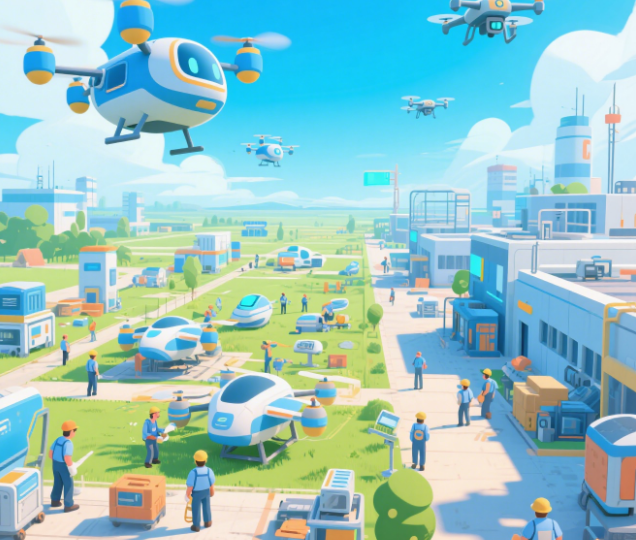Low-altitude economy, as an important component of China's strategic emerging industries, is accelerating into the public eye. It refers to all kinds of aviation activities and related economic behaviors driven by the development of low-altitude airspace, covering the flight, research and development, manufacturing, sales and operation services of civil manned and unmanned aerial vehicles, and radiating to infrastructure construction, industrial applications, technological innovation, safety supervision and other related fields. Its essence is a new industrial revolution driven by "flight".
Flight activity: the hub engine of the low-altitude economy
In the entire low-altitude economy, flight activity is undoubtedly the core hub. It not only activates upstream manufacturing and technological innovation, but also connects downstream operation services and industrial applications. Just as the vehicle is to the road economy, flying is to the low-altitude economy, which is the premise of its existence and operation. Therefore, the basic premise of low-altitude economy is to "fly", which is systematic, holistic and highly dependent on the characteristics of core links, which is significantly different from traditional industrial types such as agricultural economy, marine economy and forest economy.
Stereo Mobility: The Rise of Advanced Air Mobility
With the acceleration of urbanization, the congestion and pollution problems caused by traditional ground transportation are becoming increasingly prominent. Advanced Air Mobility (AAM) has emerged as an important complement to the future transportation system. The system uses new aircraft to carry out short-distance transportation of people and goods between cities or regions, especially in areas where there is a lack of air services or service capacity. Its goal is to build a three-dimensional transportation network that effectively relieves ground pressure through air corridors and achieves a more efficient and greener mode of travel.
Among them, electric vertical take-off and landing aircraft (eVTOL) are regarded as representative equipment for advanced air mobility. This type of aircraft is electrically driven, can achieve vertical take-off and landing without a runway, and has the advantages of compact structure, low noise, and zero emissions. Broadly speaking, they are suitable for a variety of low-altitude flight missions; In a narrow sense, it mainly serves the urban air mobility (UAM) scenario and is expected to become a key carrier of "air taxis" in the future.

Figure: Analysis of the current situation and trend of low-altitude economy and its development
Strategic position: the emerging industry of national key development
As early as 2009, strategic emerging industries were put on the national development agenda. In 2010, the State Council officially made it clear that the seven major areas of energy conservation and environmental protection, new generation information technology, biology, high-end equipment manufacturing, new energy, new materials, and new energy vehicles were listed as priority cultivation objects, and introduced supporting policies such as finance, taxation and finance to support them. The low-altitude economy is a key emerging sector in the field of high-end equipment manufacturing and aerospace, which is in line with the overall layout of the country to promote the upgrading of the industrial structure from a strategic height.
Entering the "14th Five-Year Plan" period, the state once again emphasized the improvement of policy guarantees and governance systems in the fields of aerospace, artificial intelligence, new energy, and quantum technology, and clearly supported the construction of modern transportation systems, including general aviation and low-altitude economy. Reform initiatives are also being promoted, such as the optimization of railways and integrated transportation systems and mechanisms, with the aim of building a future-oriented and globally competitive strategic industrial ecosystem.
This "flight-engined" industrial revolution is pushing the low-altitude economy from concept to reality at an unprecedented speed. In the future, with the increase of policy support, continuous technological breakthroughs and the gradual maturity of the market, the low-altitude economy is expected to become an important engine for China's high-quality development and hold up an emerging blue ocean that "flies higher".
Related:
Analysis of Low Altitude Economy and Its Development Status and Trend (2)






